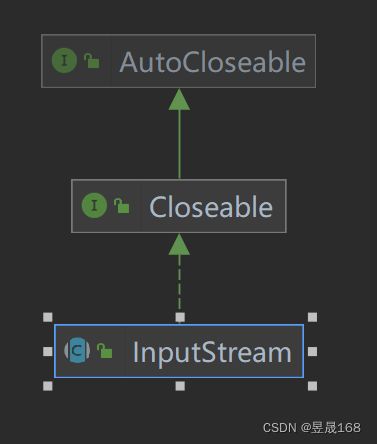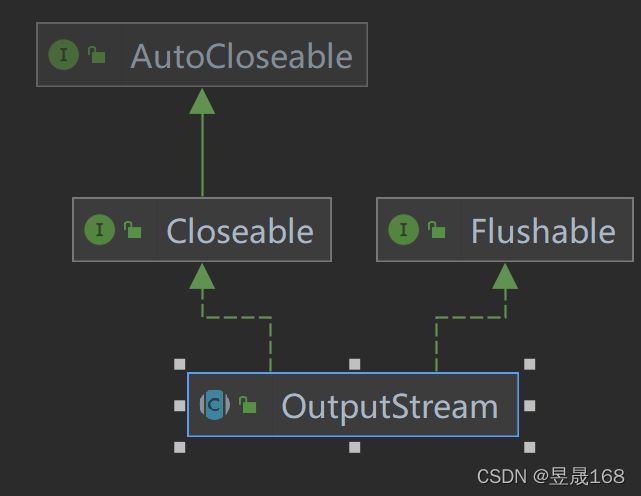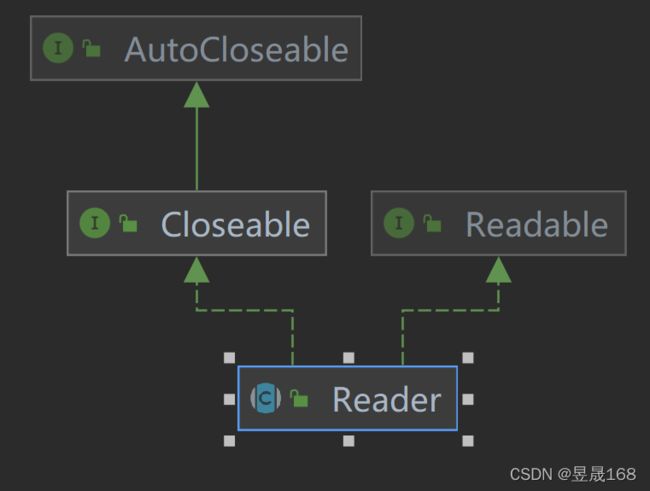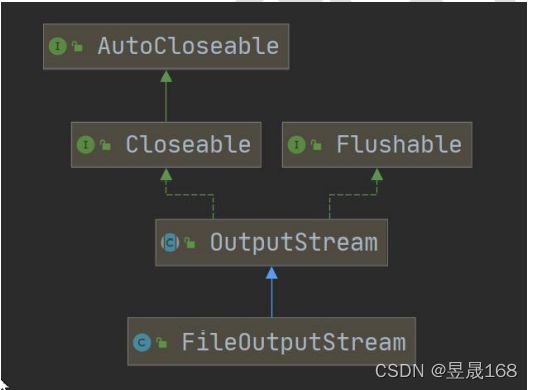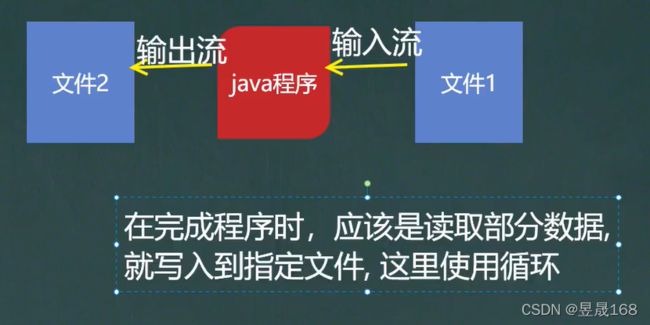IO流原理及流的分类FileInputStream类和FileOutputStream类基本介绍
IO流原理及流的分类
java IO流工作原理
I/O是Input【输入流】/Output【输出流】的缩写,I/O技术是非常实用技术,用于处理数据传输。如读、写文件,网络通讯等。Java程序中,对于数据的输入/输出操作以流【stream】的方式进行java.io包下提供了各种 ”流“ 类和接口,用以获取不同种类的数据,并通过方法输入或输出数据- 输入
input:读取外部数据【如:磁盘,光盘等存储设备的数据】到程序【内存】中 - 输出
output:将程序【内存】数据输出到磁盘中,光盘等存储设备中
流的分类
[外链图片转存失败,源站可能有防盗链机制,建议将图片保存下来直接上传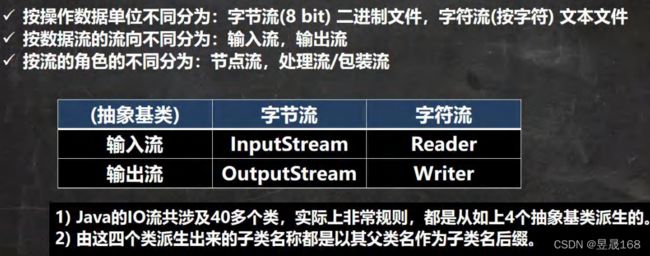
二进制文件比如是:音频,视频,图片是用字节流进行处理的
文本文件是用字符处理的
InputStream OutputStream Reader Writer这四个类都是抽象类
InputStream类继承关系图
OutputStream类继承关系图
Reader类继承关系图
Writer类继承关系图
I/O流体系图
InputStream字节输入流
InputStream抽象类是所有类字节输入流的超类
InputStream类继承关系图
InputStream常用的子类
FileInputStream:文件输入流
BufferedInputStream:缓冲字节输入流
ObjectInputStream:对象字节输入流
FileInputStream文件输入流
| Constructor and Description |
|---|
FileInputStream(File file) 通过打开与实际文件的连接创建一个 FileInputStream ,该文件由文件系统中的 File对象 file命名。 |
FileInputStream(FileDescriptor fdObj) 创建 FileInputStream通过使用文件描述符 fdObj ,其表示在文件系统中的现有连接到一个实际的文件。 |
FileInputStream(String name) 通过打开与实际文件的连接来创建一个 FileInputStream ,该文件由文件系统中的路径名 name命名。 |
常用方法:
int |
read() 从该输入流读取一个字节的数据。 |
|---|---|
int |
read(byte[] b) 从该输入流读取最多 b.length个字节的数据为字节数组。 |
int |
read(byte[] b, int off, int len) 从该输入流读取最多 len字节的数据为字节数组 |
void |
close() 关闭此文件输入流并释放与流相关联的任何系统资源 |
|---|
package IO_.fileInputStream;
import org.junit.jupiter.api.Test;
import java.io.FileInputStream;
import java.io.FileNotFoundException;
import java.io.IOException;
/**
* @author: 海康
* @version: 1.0
*/
public class FileInputStream1 {
public static void main(String[] args) {
String filePath = "e:\\IDEACODE\\javase\\hello.txt";
FileInputStream fis = null;
try {
fis = new FileInputStream(filePath);
while (true) {
int read = fis.read();
// read 返回 -1 表示读取完毕
if (read == -1){
break;
}
System.out.print((char) read);// 将其转成 char 字符
}
} catch (Exception e) {
e.printStackTrace();
} finally {
// 在使用完成后一定要对流进行关闭
try {
fis.close();
} catch (IOException e) {
e.printStackTrace();
}
}
}
@Test
public void testFileInputStream(){
String filePath = "e:\\IDEACODE\\javase\\hello.txt";
FileInputStream fis = null;
try {
fis = new FileInputStream(filePath);
byte[] inputData = new byte[1024*8];
int len = 0;
while ((len=fis.read(inputData))!=-1){
System.out.println(new String(inputData,0,len));// 将其转成字符串显示
}
} catch (FileNotFoundException e) {
e.printStackTrace();
} catch (IOException e) {
e.printStackTrace();
} finally {
// 在使用完成后一定要对流进行关闭
try {
fis.close();
} catch (IOException e) {
e.printStackTrace();
}
}
}
}
OutputStream文件输出流
FileOutputStream文件输入流
FileOutputStream类构造器
| Constructor and Description |
|---|
FileOutputStream(File file) 创建文件输出流以写入由指定的 File对象表示的文件。不会自动追加内容 |
FileOutputStream(File file, boolean append) 创建文件输出流以写入由指定的 File对象表示的文件。 如果需要追加入内容,需要使用这个构造器 |
FileOutputStream(FileDescriptor fdObj) 创建文件输出流以写入指定的文件描述符,表示与文件系统中实际文件的现有连接。 |
FileOutputStream(String name) 创建文件输出流以指定的名称写入文件。不会自动追加入内容 |
FileOutputStream(String name, boolean append) 创建文件输出流以指定的名称写入文件。 |
FileOutputStream类常用方法
| Modifier and Type | Method and Description |
|---|---|
void |
close() 关闭此文件输出流并释放与此流相关联的任何系统资源。 |
void |
write(byte[] b) 将 b.length个字节从指定的字节数组写入此文件输出流。 |
void |
write(byte[] b, int off, int len) 将 len字节从位于偏移量 off的指定字节数组写入此文件输出流。 |
void |
write(int b) 将指定的字节写入此文件输出流。 |
注意是:如果在写入内容时,该文件不存在会自动创建
案例演示:
要求:请使用FileOutputStream在a.txt文件中,写入“hello world”,如果文件不存在,会创建文件
使用String类中的getBytes方法,可以将字符串转成Bytes数组
package IO_.fileOUtputStream_;
import org.junit.jupiter.api.Test;
import java.io.FileNotFoundException;
import java.io.FileOutputStream;
import java.io.IOException;
/**
* @author: 海康
* @version: 1.0
*/
public class FileOUtputStream1 {
public static void main(String[] args) {
}
@Test
public void writeFile(){
String writeFilePath = "e:\\IDEACODE\\javase\\a.txt";
FileOutputStream fos = null;
try {
fos = new FileOutputStream(writeFilePath);
// char 会自动转成 int 类型,int 也可以自动转成 char
fos.write('H');// 只能写入一个字符
} catch (FileNotFoundException e) {
e.printStackTrace();
} catch (IOException e) {
e.printStackTrace();
} finally {
try {
fos.close();
} catch (IOException e) {
e.printStackTrace();
}
}
}
@Test
public void writeFile2(){
String writeFilePath = "e:\\IDEACODE\\javase\\a.txt";
FileOutputStream fos = null;
try {
fos = new FileOutputStream(writeFilePath);
// 写入一个字符串
String write = "hello world";
fos.write(write.getBytes());// 一定性写一个字符串
} catch (IOException e) {
e.printStackTrace();
} finally {
// 对流的操作一定要关闭流 释放资源
try {
fos.close();
} catch (IOException e) {
e.printStackTrace();
}
}
}
@Test
public void writeFile3(){
String writeFilePath = "e:\\IDEACODE\\javase\\a.txt";
FileOutputStream fos = null;
try {
fos = new FileOutputStream(writeFilePath,true);// 可以在尾部进行追加
String writeContext = "hello world";
fos.write(writeContext.getBytes(),0,writeContext.length());
} catch (IOException e) {
e.printStackTrace();
} finally {
// 在使用流时,一定要释放资源
try {
fos.close();
} catch (IOException e) {
e.printStackTrace();
}
}
}
}
练习:要求编程完成图片、音乐的拷贝
注意是:在拷贝大文件时一定要使用循环拷贝,而且是使用write(byte[] ,int ,int )方法
package IO_.fileOUtputStream_;
import java.io.FileInputStream;
import java.io.FileNotFoundException;
import java.io.FileOutputStream;
import java.io.IOException;
/**
* @author: 海康
* @version: 1.0
*/
public class FileCopy {
public static void main(String[] args) {
String filePath = "e:\\rose.jpg";
String file = "d:\\rose.jpg";
FileInputStream fis = null;
FileOutputStream fos = null;
try {
fis = new FileInputStream(filePath);
fos = new FileOutputStream(file);
byte[] dataFile = new byte[1024*8];
int length = 0;
while ((length =fis.read(dataFile))!=-1){
fos.write(dataFile,0,length);// 一定要使用这个方法,否则会出现问题
}
System.out.println("拷贝完成!!!");
} catch (IOException e) {
e.printStackTrace();
}finally {
// 在使用完成一定要释放资源
if (fis != null){
try {
fis.close();
} catch (IOException e) {
e.printStackTrace();
}
}
if (fos != null){
try {
fos.close();
} catch (IOException e) {
e.printStackTrace();
}
}
}
}
}
